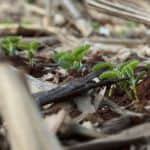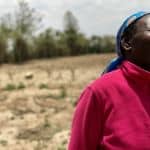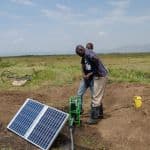Scaling Solar Irrigation to Fight the Global Food Crisis: Why Subsidies Could be the Solution
COVID-19 has triggered a global food emergency. The number of people facing starvation could double to 265 million by the end of the year. In Kenya, where smallholder farmers produce most of the country’s food, plagues of desert locusts and several seasons of excessive rainfall have already devastated their ability to grow crops. Then the pandemic hit.
Market closures and movement restrictions put in place to combat the virus have severely disrupted agricultural supply chains, while the economic fallout has left many Kenyan households unable to afford food. With no certainty around how long the pandemic will last — and another wave of locusts on the way – it has never been more important to boost the ability of smallholder farmers to feed themselves, their communities and their country.
The Benefits and Challenges of Solar-Powered Irrigation Systems
About 98% of food production in Kenya currently relies on rainfall as the main source of water, producing low yields and becoming riskier every year due to unpredictable weather patterns. Solar-powered irrigation systems enable farmers to drastically improve their agricultural productivity, doubling or even quadrupling their yields. This solution also helps them extend their growing seasons, cultivate a greater variety of crops, and strengthen their resilience to climate change. As a market leader in solar irrigation in Africa, SunCulture – where I serve as CEO – has seen first-hand the transformative impact of this technology.
However, we’ve encountered some challenges in getting these systems into the hands of the farmers who can benefit from them. The main barrier to faster uptake is affordability. A typical system costs anywhere from US $500 to $1,000, while on average, a Kenyan farmer makes just under $2,100 annually. Even on our “Pay-As-You-Grow” financing plan, in which a farmer pays off the cost of the system in monthly installments, this price tag remains an obstacle for most smallholder farmers whose livelihoods have been hurt by COVID-19, and who are facing an uncertain economic recovery ahead.
Why Subsidies are Key to Scaling Solar Irrigation
We believe there is a clear solution to close the affordability gap and unlock the benefits of solar irrigation at scale: smart, time-bound subsidies. Here are three reasons why:
This approach has worked in other parts of the world: Subsidies have been instrumental in getting new technologies into the hands of rural populations. Government subsidies for water pumps in South Asia in the 1950s and 1960s helped to fuel the Green Revolution. Today, most South Asian countries continue to subsidize solar home systems to promote the uptake of rural electrification. And countries that have achieved widespread rural electrification over the last 50 years have had their grid connections subsidized by 70-100%, according to CrossBoundary and Duke University’s Energy Access Project. Many countries have long known that subsidies are the key to reaching rural, poor and remote communities which would otherwise have been left behind if they relied solely on the private market.
Solar irrigation will increase food production: There is widely accepted evidence of the benefits of solar irrigation in increasing agricultural productivity. While irrigated land accounts for only 18% of total cultivated area in the developing world, it accounts for about 40% of the value of agricultural output. In Kenya, introducing subsidies would be a tremendous stride towards securing affordable, nutritious and readily available food for all, which is both a core pillar of the government’s “Big Four” agenda and a critical development goal. A report released in June by Mercy Corps and Dalberg projects that a five-year, 50% subsidy on solar irrigation systems in Kenya would increase food production by 30%. This is huge.
Subsidies are a smart financial decision: The economic returns of solar irrigation subsidies are as clear as the social ones. A subsidy program in Kenya would cost about US $96 million over five years, while generating more than US $6 billion in income for smallholder farmers. It would also significantly reduce what Kenya pays on importing food – the country has spent about US $1 billion in the first half of 2020 alone, a 12.5% increase compared to the same period last year.
While the world has yet to feel the full effects of COVID-19, we know that a global food crisis is looming. Solar irrigation subsidies could be a critical part of addressing this crisis and feeding the world. With greater public and social sector investment in scaling up solar irrigation subsidies, we can get there faster, together.
Samir Ibrahim is the CEO and a co-founder of SunCulture.
Photo courtesy of Ivko.
- Categories
- Agriculture, Coronavirus, Energy



